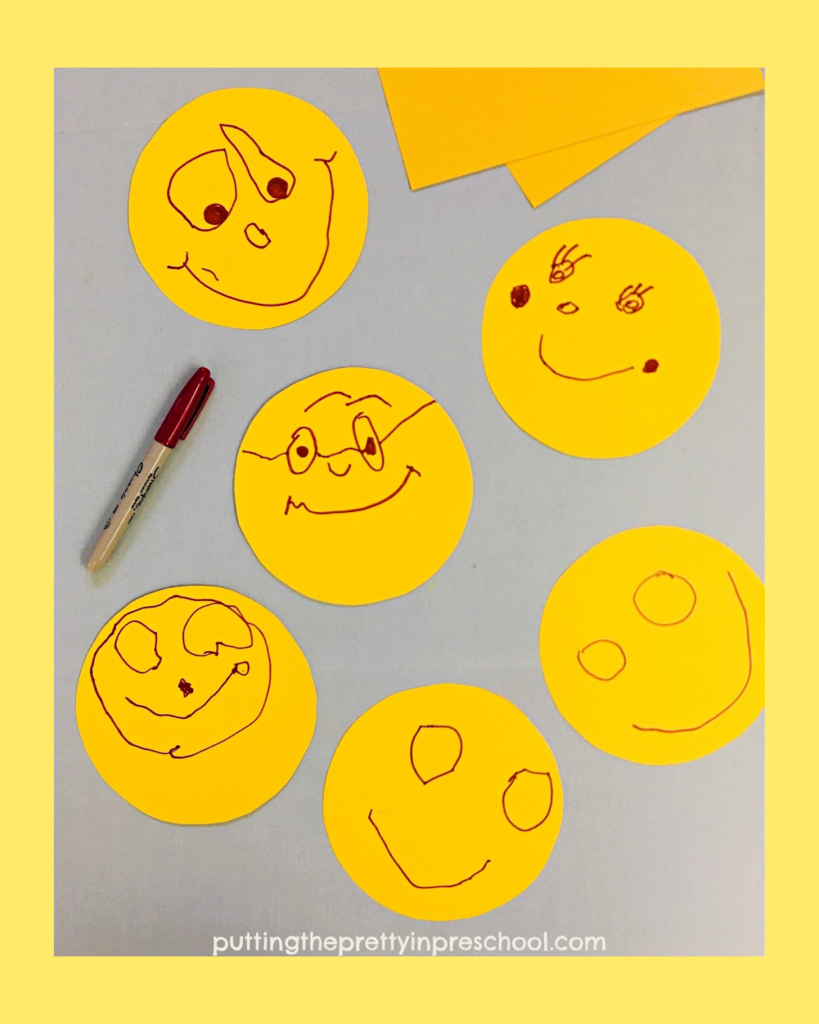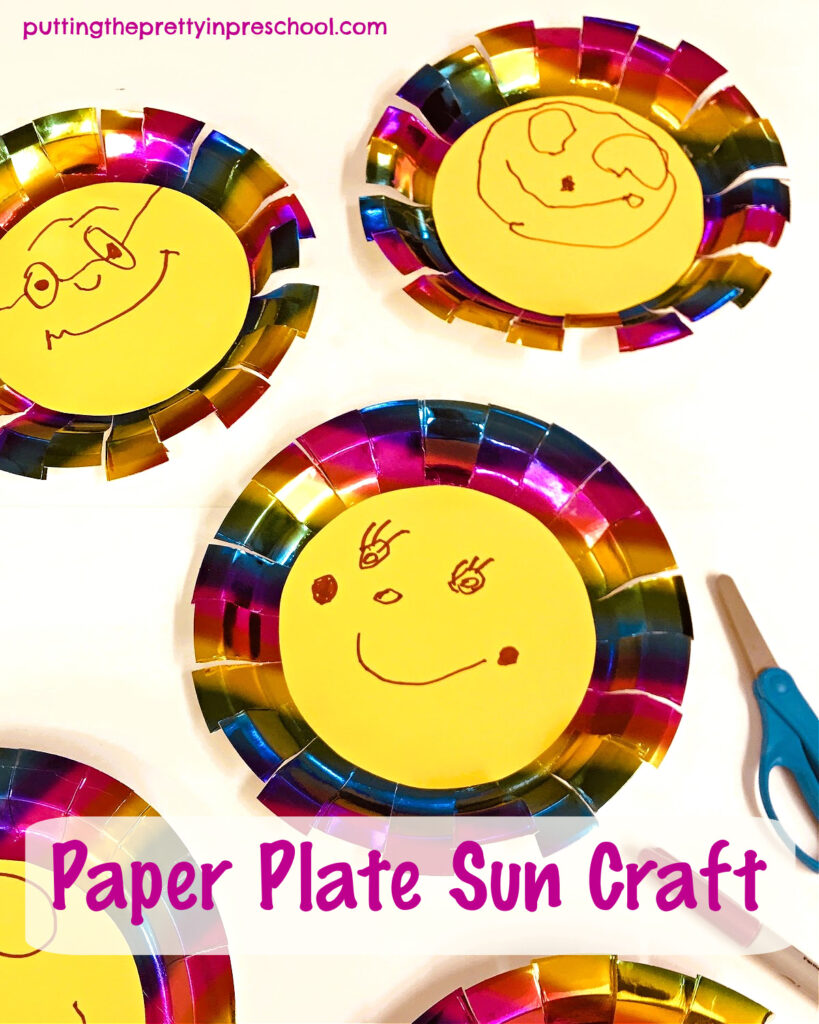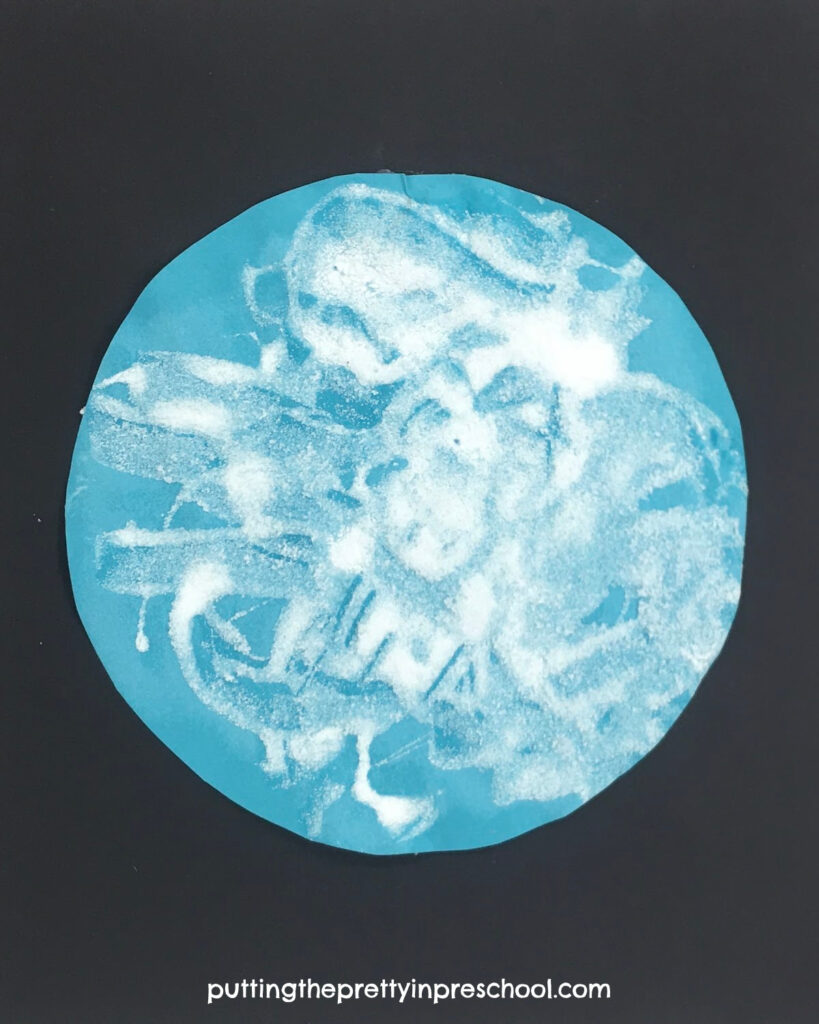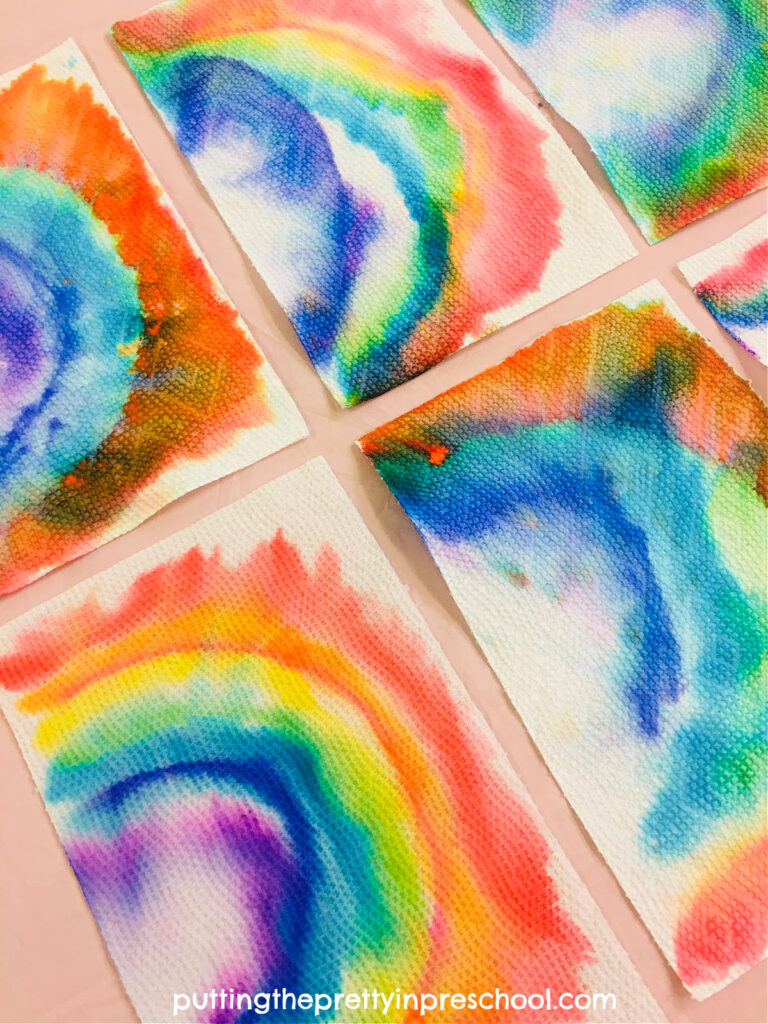
_______
A few weeks ago, I was looking for tableware for a space kitchen dramatic play center and found speckled and silver supplies that fit the bill. These metallic rainbow plates gleamed next to the iridescent silver ones I chose, and caught my attention. It was a no-brainer to use them in an easy and cute paper plate sun craft.
_______
Supplies To Collect
Just the following few supplies are needed for this simple sun craft:
- 9-inch metallic rainbow party plates
- bright yellow cardstock paper
- marker
- glue stick
- scissors and pencil
_______
Follow me on Pinterest for more early learning ideas.
_______
Preparing The Paper Plate Sun Craft

_______
Craft preparation is easy for this paper plate sun craft. First, use a marker to draw lines along the ribs on the edge of 9-inch rainbow plate backs. The lines will be about two inches long.
Next, cut circles from bright yellow cardstock, about 6 inches in diameter.
Then choose a marker in a matching color to use for creating sun faces.
Set out a paper plate front side down and a pair of scissors for each child participating.
_______
The Paper Plate Sun Craft
For this craft, invite children to cut along the lines on the back side of their plate. This is great scissor skill practice.

_______
Next, have each participant draw a face on their yellow circle using a color that matches one of the metallic plate hues.

_______
After turning their paper plate right side up, give each child a glue stick to affix their yellow paper face to the center of their sun.
Finally, encourage participants to bend up every other fringed section on the edge of their plate to enhance the sun’s rays and create a 3D effect.

_______
The shiny, adorable paper pate suns beg to be displayed and will look cute together tacked to a bulletin board or wall.
_______
Variation of the Paper Plate Sun Craft
As an alternative to using metallic plates for this craft, offer plain white paper plates. Invite children to paint or color their plate yellow or orange, snip sun rays around the edge, and then glue on a round yellow paper face.
_______
Related:
_______
[Read more…] about Paper Plate Sun Craft



























